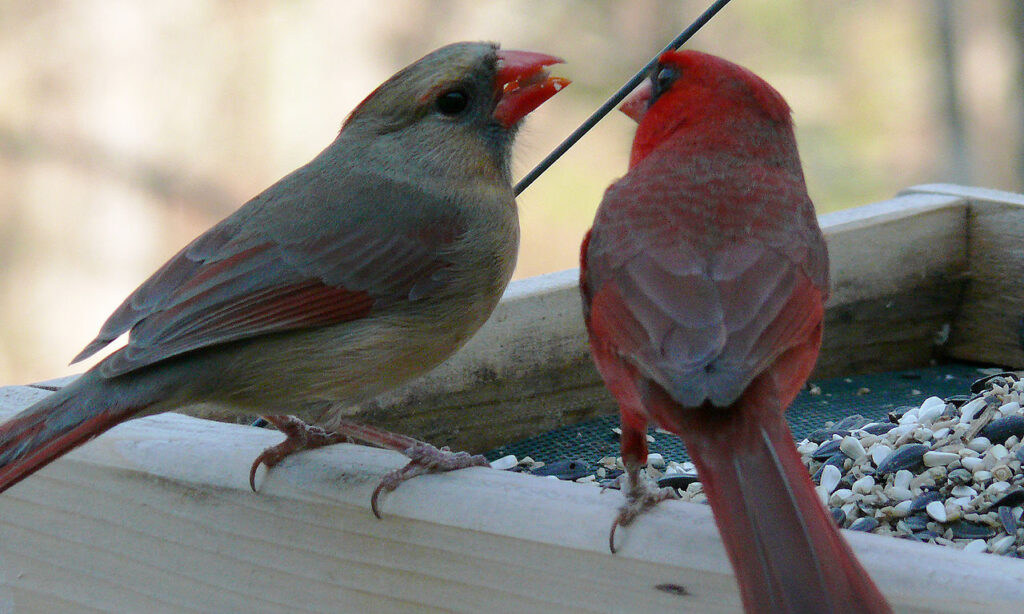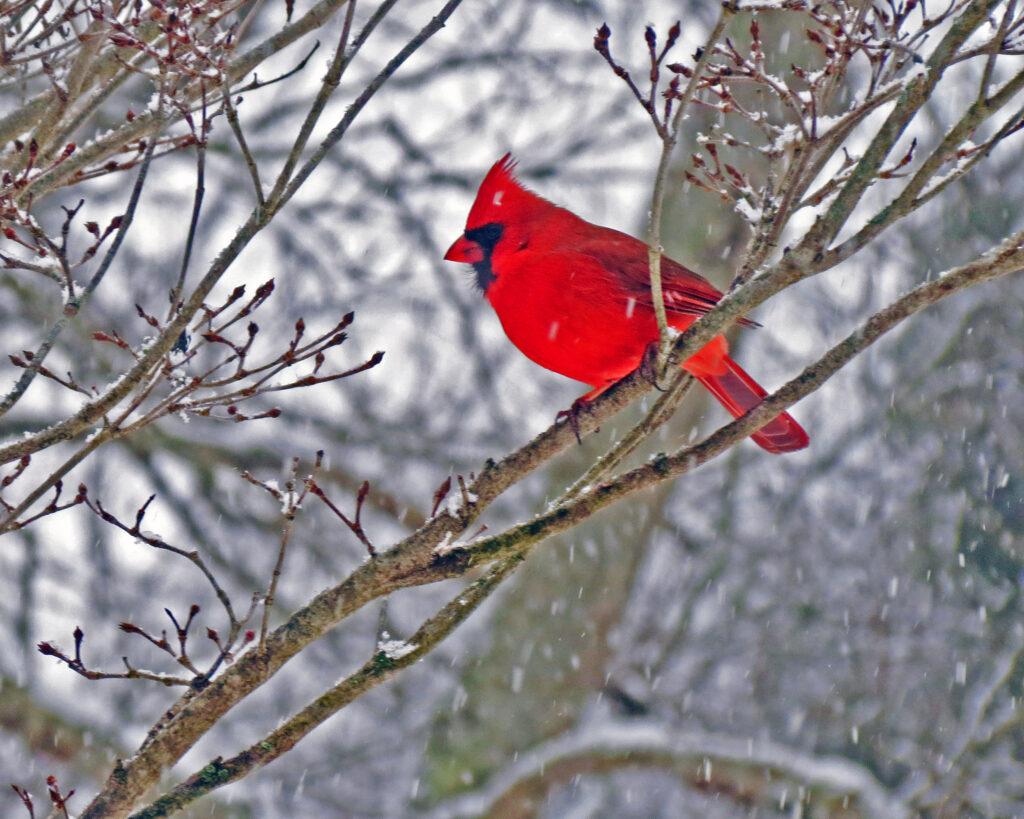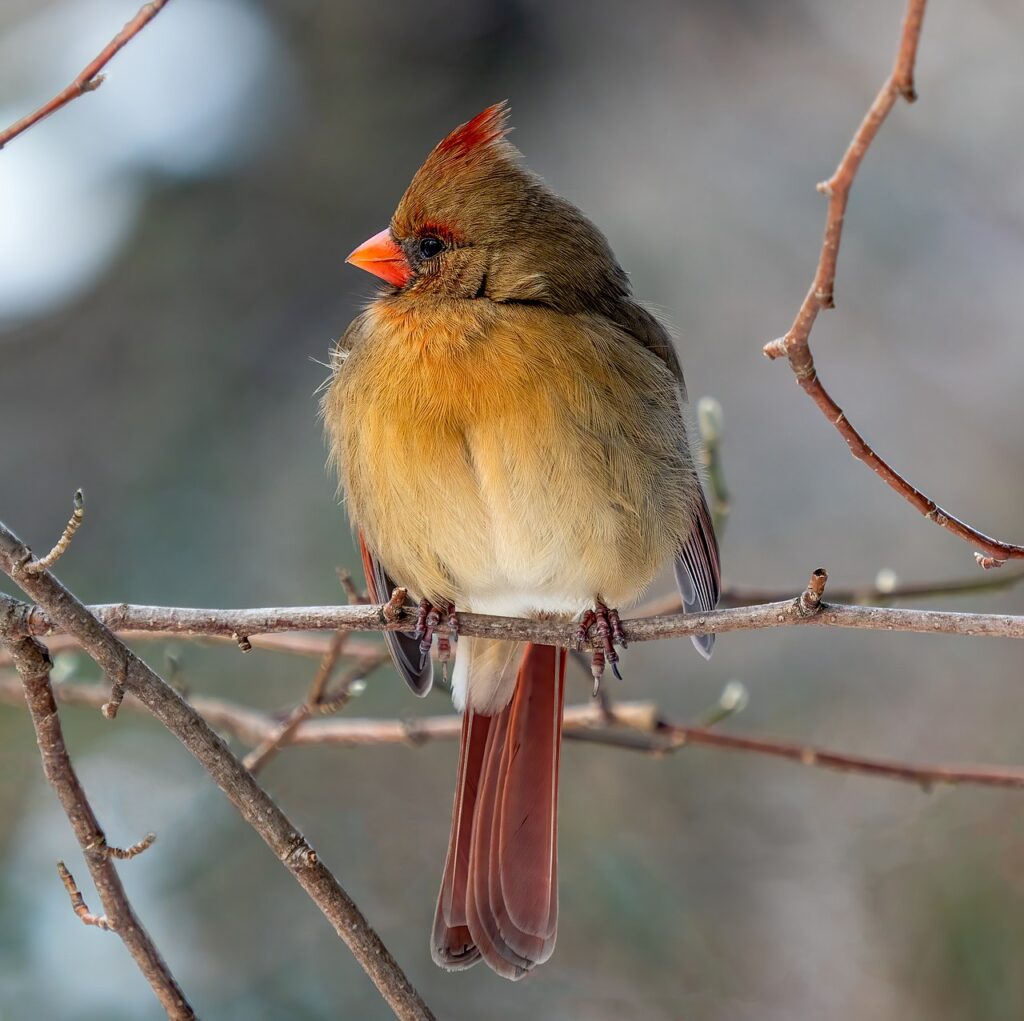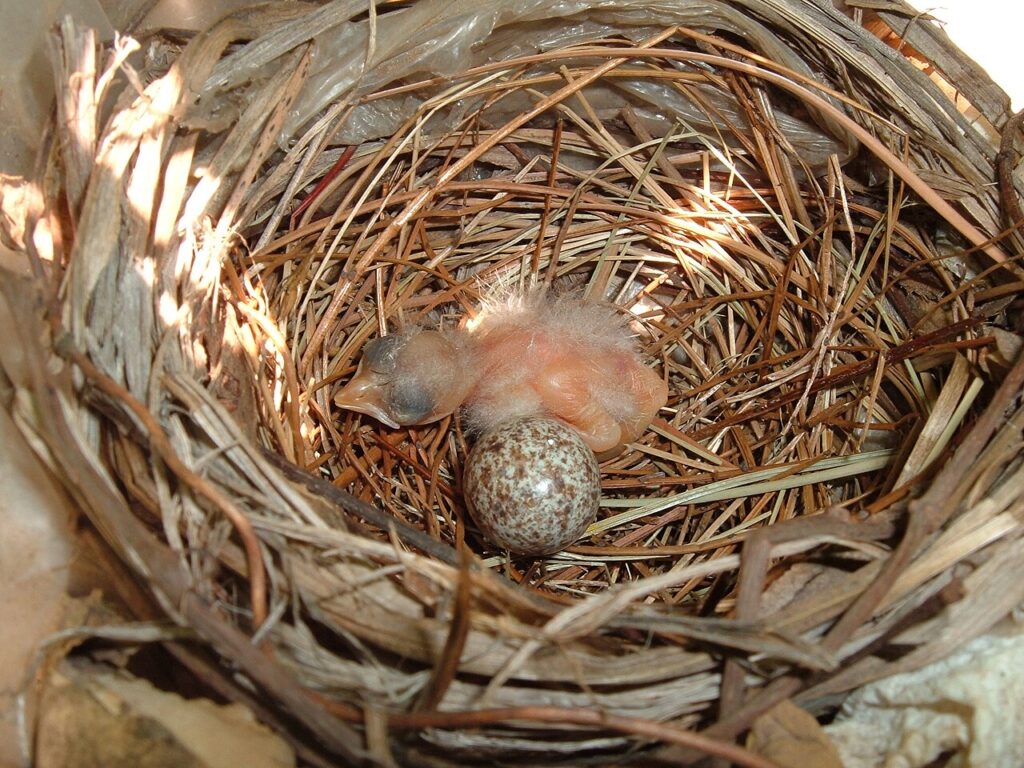State bird of Illinois, Indiana, Kentucky, North Carolina, Ohio, Virginia and West Virginia
The Northern Cardinal (Cardinalis cardinalis) or simply “Redbird” is one of the most recognizable and beloved birds in North America. Known for its stunning appearance, enchanting song, and widespread distribution, this bird holds a special place in the hearts of birdwatchers, nature enthusiasts, and even casual observers. This beautiful and delightful crowd-pleaser is the most popular state bird, honored in seven different states as an official symbol. It even lends its name to two different professional sport franchises.
In terms of its physical appearance, the Northern Cardinal is a medium-sized songbird, with considerable sexual dimorphism. Male cardinals boast bright red feathers all over their bodies, while female plumage is predominantly brown with red accents on the wings and tail. The vivid hues of red and scarlet along with their striking contrast in coloration are big reasons why this bird is so captivating. Adults can grow anywhere from seven to nine inches in length with long tailfeathers and a distinctive crest on top of their head.

(Photo by Ken Thomas via Wikimedia Commons/Public Domain)
The Northern Cardinal is not only a feast for the eyes but a treat for the ears, as well. Their melodious songs are often described as clear and “whistled,” and can be heard throughout the year. Cardinals are known for their varied vocalizations, which include songs for attracting mates, defending territory, and communicating with their young. Their songs are a delightful part of Nature’s musical soundtrack in many regions of North America.

(Photo by Mary Ellen St. John via Wikimedia Commons/Public Domain)
The range of the Northern Cardinal spans from eastern Canada to the Gulf of Mexico, and from the Atlantic coast to the Great Plains. They are often found in backyards, parks, and woodlands, demonstrating an ability to adapt to both natural and human-altered environments. They are non-migratory, remaining in their territories throughout the year, and their presence adds a splash of color to many a winter landscape.
Northern Cardinals are well-known for how much they love to eat seeds and fruits as a primary food source. They are opportunistic feeders, though, and will readily consume insects and spiders, particularly during the breeding season when protein-rich food is essential for their chicks. This flexibility in their diet allows them to thrive in various habitats and seasons.
Redbirds are also known for their monogamous breeding habits. Pairs of Northern Cardinals form strong bonds, and typically mate for life. Their nests, constructed by the female, are usually situated in shrubs or small trees and are well-hidden among the foliage. The female lays a clutch of eggs, and both parents participate in incubation and chick-rearing duties.
If you would like to be on a first-name basis with Cardinals in your neighborhood, there are a few tricks to make them feel right at home. Start by setting up a bird feeder and fill it with sunflower seeds. They just can’t resist them. They will also appreciate peanuts, cracked corn, safflower seeds and suet. Cardinals are also quite fond of water, so a birdbath makes a nice addition. Just make sure you clean and sanitize it at least several times a week. Unlike many other backyard birds, Cardinals will not use birdhouses or nesting boxes. Plant some shrubs or bushes around your yard to give them some privacy since they’re kind of shy when it comes to their love nests.
Conservation-wise, Northern Cardinals are not considered threatened or endangered. They have adapted well to suburban environments and the presence of bird feeders, which has helped maintain healthy populations. However, like many other bird species, they still face challenges such as habitat loss and the effects of climate change. Ensuring that they continue to thrive involves preserving the diverse landscapes they inhabit and protecting the natural resources they rely on.
So there you have it. The Northern Cardinal is a beloved bird species cherished for its vibrant plumage, enchanting songs, and adaptable behavior. It serves as a symbol of beauty and resilience in the avian world and holds a special place in the hearts of many. As these birds continue to grace our backyards and natural habitats, they remind us of the importance of conservation efforts to protect the rich biodiversity that surrounds us.
By Steven Roberts



